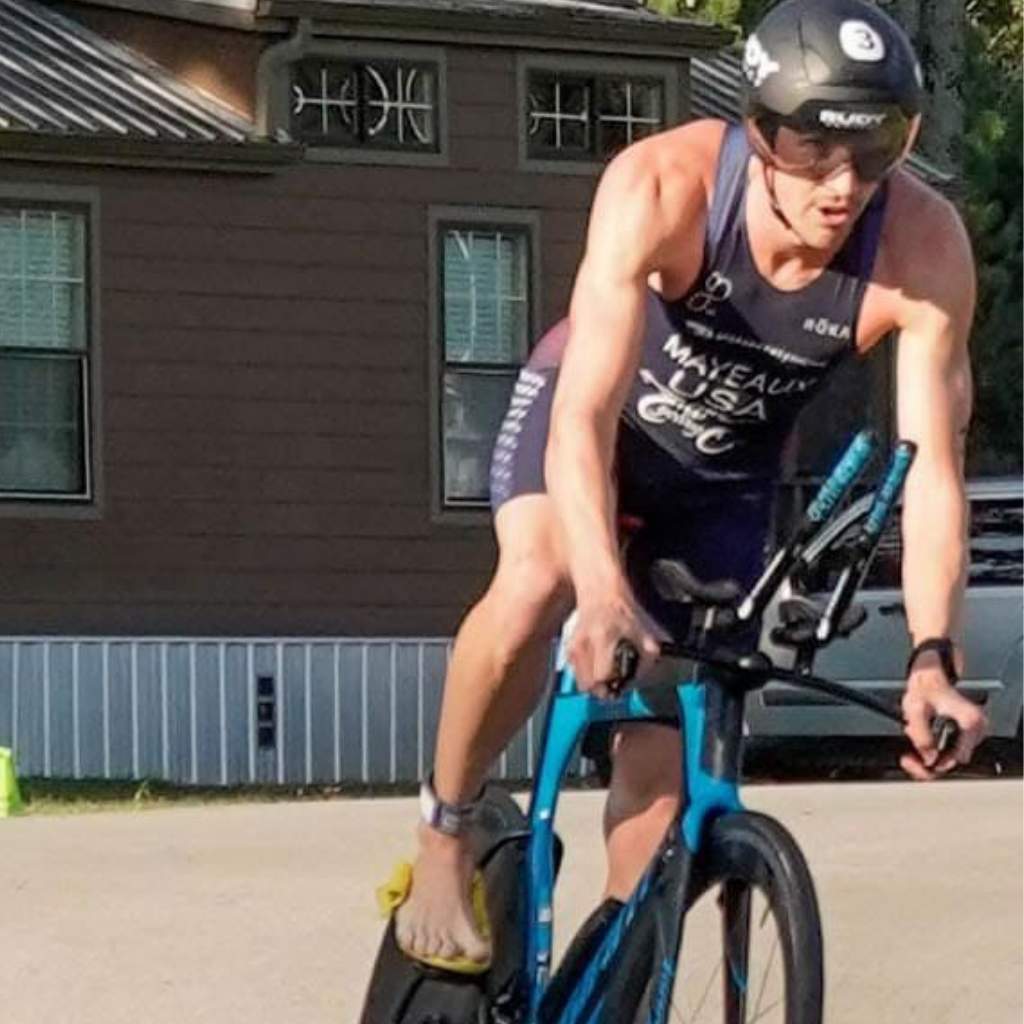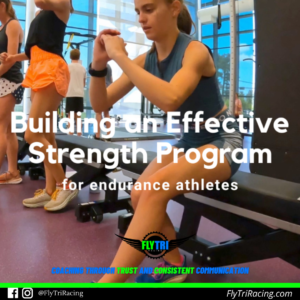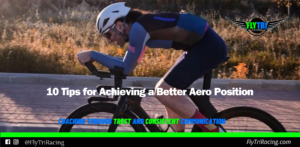
5 Tips for Faster Transitions – The Underrated Fourth Discipline
- Post author:webadmin
- Post published:September 17, 2021
- Post category:FTR Blog / Transitions
BY WILLIAM RITTER
5 tips to faster Transitions – The underrated 4th discipline of Triathlon.
Ask just about any triathlon coach who tells their athletes they need to practice transitions, and they will likely tell you of the funny looks they get or times when they just get flatly ignored. Those funny looks would likely change to rapt attention with the realization of the real difference transitions can make in terms of time and placing. Triathletes often forget the clock is still running in transition. So much of our time is spent focused on the main three disciplines throughout the week, that transition practice often gets pushed aside. This year one of my athletes, Anne Pileggi, won her age group in the Ironman Gulf Coast 70.3 by just 0.85 seconds, and her win came down to her having faster transitions. Imagine being the athlete who had the fastest swim, bike, and run splits but lost because their transitions were too slow. This is why transition practice deserves more attention.
Another game-changing moment around transitions happened for Garrett Mayeaux, a former Texas Aggie I work with. In the beginning of our work together, before he earned his pro card, his major weakness was transitions. He was so much slower in transition compared to everyone else he was racing, that we had to actively include transition practice in our training.
Learning how to have fluent transitions can accelerate your classification to the next level; from finishing back to middle of your age group, to landing on the podium, or in this case, to earning your pro card. Having your equipment in order and your movement through transition as efficient and seamless as possible without the feeling of hurrying is key. Transitions typically, but not always, matter most in short races and draft legal races, but they can also matter in long races, especially for the pros. If you can make up some ground on a faster swimmer or cyclist in transition then not only can you produce a positive drafting effect but you can also generate a helpful psychological boost.
Here are five key tips to a better transition.
-
Practice. This should go without saying but you have to practice, and then practice some more. Triathletes come in after the swim or bike after having just used their large muscle groups to engage their fine motor skills in transitions, such as strapping on their helmet or putting their shoes on. If you just finished your swim in even fairly cold water this can be a time-consuming challenge for your hands and fingers. Like a basketball player, working on their free throws, you, too, have to be consistently getting your practice reps in. Practicing your transition only on race day won’t work. Rather, by the time race day comes you should have rehearsed enough times that you can go through transitions on auto-pilot.
Most triathletes are seriously pressed for time, so trying to add in another session solely for transitions, that, admittedly, doesn’t really help our overall fitness can be difficult, even though we may understand that doing so can improve your place and time on race day. So, how can you incorporate transitions in your training , without taking more additional practice time? It’s simple, before you take your bike out on the road, simulate as if you were coming out from the swim exit to get on your bike. Go through the motions of putting on your helmet, sunglasses, race belt, mounting on your bike, then go! And when you get back practice the dismount. Your gear, such as your helmet and glasses should be in a position that allows you to get your helmet buckled and glasses on quickly and efficiently. In shorter races, it’s ideal to go sockless on the bike and run. Some athletes may find it useful to use powder or vaseline to reduce blisters.
-
Less is More Approach. You don’t have to skimp on the essentials but does your 5-gallon bucket or ice chest sitting in the transition area meet the definition of “essential?” The less items you have and fewer things to do in transition the faster you will be. The more you practice transitions (see number 1 above) the more you realize what you do not need to bring into your transition. Besides, sitting down on your bucket or on the ground is not advisable, due to blood flow reasons which can lead to dizziness.
-
Study the Transition Area. When you arrive to set your bike up in transition make sure you study the landscape and do a walk-through around you. You need to know where the entrances and exits are for the swim, bike, run. Next, you also need to know which row your bike is in and how far down. Be sure to check out the different landmarks that line up with your row so you can quickly identify where you need to go in transition. For example, look for bright colors or objects to use as landmarks, or if the number of rows is marked, remember your row number.
-
Apparel & Accessories Matters. When you’re racing a triathlon make sure you are wearing a comfortable triathlon kit that can be worn through the whole race, so you don’t have to spend time changing clothes in transition. The only exception is if it’s exceptionally cold on the bike but expected to warm up later.
The next must-have accessory is speed laces in your running shoes. This will save you a large amount of time by not having to fumble through tying your running shoes with those fine motor skills not quite ready to work smoothly after the swim or bike..
Race belts, while not required, are a fundamental piece of equipment if you plan to have a speedy transition. You do not want to be pinning your race bib on in the middle of a race in transition with those little bitty safety pins. Most races only require that you have your number on your front during the run. Also, a tip I’ve used over the years was to fold my race number and belt into my shorts before the swim. The paper of the number is usually durable enough and then I don’t have to spend time buckling the race number heading out into the run. I just pull the number out and run. It’s one less thing you have to remember in transition.
-
The mount and dismount. Yes, you should practice these as well. This can be applied with my first tip above. First, you should definitely practice running with your bike holding the bike seat and this should be done whether you want to do a flying mount or not. Why? While the flying mount is not required, when you mount or dismount on your bike and stop, not only are you slowing yourself down but you’re also creating a safety hazard for others by blocking the exit and entrance of transitions.
How do you do this? If you’re running on the left side of your bike take your right hand and push the bike seat, as you get some momentum, transition your hands to aerobars and then it’s similar to performing a layup in basketball, left, right, left, right, hop off the left foot and onto the seat. This is just like any other fundamental athletic skill that you need to learn for triathlon. If you’re unsure if you can do this, practice layups first as a warmup skill to get comfortable with the general movement, before you practice hopping on your bike. Don’t worry, you don’t have to be like Lebron James and actually make the bucket. You can also practice the general skills of mounting with your shoes on without a flying mount, just remember to move over to the side of the transition exit to not cause a collision.
For the dismount some like to swing their leg over the top tube and others like to swing their leg around the back depending on the personal comfort and ease of the movement. You will want to come out of your shoes about 200 meters before. You can do this by unstrapping your bike shoes and letting the heel drop and swing back up and then place your foot on the shoe.
In summary, preparing for and practicing transitions throughout the week before and after your bike rides is a good way to get in frequent practice without any additional training time than you would normally put in. As race day comes, you will be able to move through transition on auto-pilot. Remember the clock is still running in transitions and it’s not a time for a rest and recovery but to move to the next discipline as quickly as possible.

Ritter, from Tyler Texas, is the Head Coach at Fly Tri Racing. He is a TrainingPeaks Level 2, Ironman U, USA Cycling, and USA Track and Field Level 2 Endurance Certified Coach and USATF Cross Country Specialist. He specializes in coaching triathletes and runners of all abilities. Ritter’s coaching is detailed and based on the individual athlete blending the art and science of coaching. To learn more about Ritter and personal coaching visit www.flytriracing.com.



